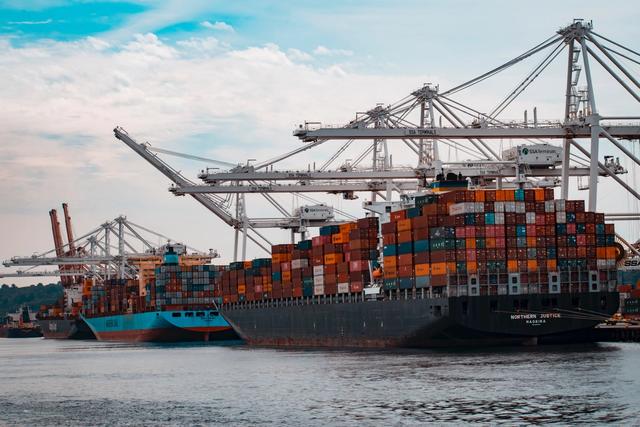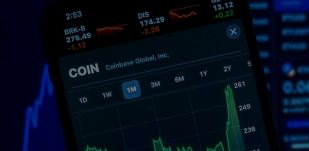What Forecasts and Trends to Expect from the Shipping Industry in 2022
Paul Reilly
Chief Commercial Officer
Stormy conditions gave way to tailwinds for the shipping industry in 2021 in what was a choppy 12 months on the high seas. Waves created by the onset of the Covid-19 pandemic in 2020 rippled into 2021 with such force that the shipping industry - which is widely considered the backbone of world trade - was forced to batten down the hatches. From shipping container shortages and rising shipping costs to congestion at ports and container ship shortages, the industry found itself in the doldrums amid the pandemic - only to mount an impressive recovery with the wind in its sail.
Robust stimulus-driven demand in developed countries and resurgent manufacturing in China have bolstered shipping operators. And while manufacturers across the globe continue to be buffeted by lockdowns, border restrictions and supply chain bottlenecks, the resurgence of shipping rates has seen many operators navigate the pandemic into calmer waters - providing them with a platform to do more than just stabilise. According to a Deutsche Bank forecast, container shipping has entered a “supercycle” which will result in operators generating more money in 2022 than the previous year.
The shipping industry has stemmed the tide created by the pandemic and is well-placed to emerge more resilient than previous economic downturns - but challenges remain in 2022. Several forecasts and trends are expected to impact the shipping seascape over the coming months - some more encouraging than others.
Contract negotiations

Many carriers - typically larger importers - are attempting to sign longer contracts in 2022, especially with beneficial cargo owners (BCOs). Their aim is to guarantee maximum volumes and achieve peace of mind following a turbulent period. Some carriers have also started negotiations earlier than usual, and are even participating in discussions with mid-size forwarders - unlike in the past.
For example, Maersk has been candid about focussing on long-term contracts. The Danish shipping company wants to offer maximum volumes to BCOs and long-term contracts - although some carriers, like Hapag-Lloyd, still advise customers to seek spot markets.
Inventory control
Following major pandemic-fuelled disruptions across the supply chain - including manufacturing- and seesawing demand for goods, many importers are taking steps to ensure they have the supply ready to sell in their warehouse when demand is high. As the shipping industry continues to manage the aftershocks from the pandemic, it’s not realistic for importers to expect to order from China and receive the cargo in their warehouse three weeks later. To mitigate the drop in ocean shipping reliability, importers are placing orders earlier and eliminating items that have become extremely expensive in recent months. This will help to create space for popular goods and save the warehouse space, which is becoming a premium.
Decarbonisation

It’s all hands on deck when it comes to the decarbonisation of the shipping industry - which was a key focus during COP26. The ambition to close the gap to net-zero emissions is a challenging one in a sector that has long asset lifespans, high energy dependency and complexity of electrification. According to the International Maritime Organisation (IMO), shipping is responsible for 2-3% of all global greenhouse gas emissions annually.
The pandemic has underscored the extent to which the world relies on shipping - which accounts for about 80 per cent of the volume of global trade - to maintain the supply of essential goods. However, our utter reliance on its network of approximately 6,000 ships carrying roughly 25 million containers means it generates increasing carbon emissions.
The IMO has set a target to reduce international shipping carbon emissions per transport network by at least 40 per cent by 2030, and 70 per cent by 2050 - off a 2008 baseline.
This specialised agency of the United Nations that’s responsible for regulating shipping has endorsed ‘New technologies for greener shipping’ as the World Maritime theme in 2022, reflecting the need to support a green transition of the maritime sector in a post-pandemic world.
With change in the wind in the shipping industry, all parties involved must be prepared to move with the times towards a more sustainable future. Operators' ability to reduce their carbon footprint will underpin the direction and success of the sector, and those who fail to adapt efficiently will struggle.
Shipping costs
Shipping costs have accelerated rapidly since the second half of 2020 - and there is little sign of it abating in the short term against a backdrop of rising global demand, restricted expansion in shipping capacity in the first half of 2022 and the disruptive effects of Covid restrictions.
The subsequent disparity between surging demand and reduced supply capacity prompted record container freight rates on practically all container trade routes. For example, the Shanghai Containerised Freight Index spot rate on the Shanghai-Europe route was less than $1,000 per TEU in June 2020, before jumping to around $4,000 per TEU by the end of 2020, and $7,552 by the end of November 2021. Furthermore, cargo owners faced delays, surcharges and additional costs, and encountered speed bumps when attempting to move their containers promptly.
Why shipping costs are likely to remain elevated for the foreseeable future:
- Global imbalances: A confluence of factors have created imbalances in the production, demand, and supply of goods during the pandemic: countries implementing lockdowns and reopening at different times, shipping operators reducing capacity on major routes, and container shortages. When western demand for goods produced in China rebounded in the second half of 2020, the shipping container shortage triggered competition for ocean freight capacity, causing costs to surge.
- Limited alternative modes of transport: Alternatives to ocean freight such as air or road would normally be an option, but broken supply chain constraints have restricted capacity and increased tariffs.
- Port congestion and closures: Shipping performance was curtailed in 2021 by congestion at ports, meaning fewer vessels arrived on schedule and average delays increased. To offset the impact of extended waiting times, operators have been forced to charge extra fees.
Payments in over 35 currencies
Record-breaking profit for shipping container lines
The global shortage of shipping containers is expected to continue well into 2022. These 40-foot steel boxes are the building blocks of the shipping industry, but having been taken for granted pre-pandemic, they’re not so easy to come by anymore. Surging demand to restock shelves post-lockdown and a host of shipping disruptions have left thousands of containers marooned on land and at sea. However, there could be a major winner from this situation: the shipping container lines.
Prepare yourself for an eye-popping projection from Drewry, an independent maritime research consultancy: container shipping pre-tax profit for 2021 and 2022 could be as high as $300 billion - potentially giving container line companies a mammoth war chest. Towards the end of last year, the industry was on course to make $150 billion - which would represent a new record and an eye-watering surge from the $25.4 billion generated in 2021.
Drewry has attributed its optimism to stronger-than-expected spot rate movement in the third quarter of 2021 and a longer supply chain recovery timeline - prompting it to upgrade its outlook for average global freight rates.
Major container companies like Maersk are capitalising on strong demand in ports by raising freight prices to new highs. Consequently, Dewry expects average global rates for the fourth quarter of 2021 to increase by 126% above those in the third quarter.
Ports and terminals have essentially become parking lots for shipping containers amid the breakdown of supply chains. These conditions have allowed container and shipping line companies to continue charging fees while they sit dormant. Meanwhile, rising demand for containers and shipment has triggered rapid and significant fee increases once they are in motion again.
Increased shipping capacity

According to a report by trade credit insurer Euler Hermes, shipping congestion is expected to become less acute in the second half of 2022 because capacity is increasing. Despite forecasts suggesting the cost of shipping will remain elevated, capacity is expected to increase as global orders for new container ships hit record highs, amounting to 6.4% of the existing fleet.
Euler Hermes noted that “The rapidly growing new transportation capacity orders … should turn operational towards the end of 2022, which should significantly ease shipping bottlenecks,” The report also said around $17 billion has been set aside to upgrade port infrastructure and waterways in the US, which should help ease congestion. All of which could contribute to an upsurge in global trade volumes, which the report predicts will rise by 5.4% in 2022 and 4% in 2023, following growth of 8.3% in 2021.
Currency risk exposure
Challenges remain as Covid-19 restrictions ease and the shipping industry continues to gather steam, but opportunities will also present themselves - not least the opportunity to save money when making international payments amid pandemic-fuelled currency market volatility. As shipping operators adjust to the new normal and plan for the future, they must be acutely aware of the need to manage their exposure to currency risk.
Currencies are traded around the clock - 24 hours a day. Therefore, the value of the pound against other currencies is constantly changing - not just daily but by the minute. Why do they fluctuate in value? Currencies strengthen and weaken each day because banks and investors purchase huge volumes in response to political and economic news: positive news about a country typically causes the value of the currency to rise (“strengthen”), while bad news causes it to fall (“weaken”).
We also know when they might move because we often know the timing of political events that might influence them, and the economic calendar shows us when influential economic data will be released. However, there will also be news that happens without warning - anything from a US president tweeting late at night to a fall in the price of bauxite.
What we cannot predict – and no one can – is whether they will move up or down or by how much. Even slight fluctuations can make a big difference to the price of your business’s international payments. In some instances, the impact of the political and economic variables that influence exchange rates can be severe, as has been proved in recent times. For example, back in March 2020, when the true extent of the Covid-19 pandemic became clear, the pound sunk to its lowest level against the dollar since 1985 and its lowest level against the euro since the depth of the financial crisis 11 years earlier.
Before the pandemic struck, this exposure to currency market risk had the potential to dent your bottom line if left unaccounted for. Since then, however, the importance of mitigating the impact of exchange rate fluctuations on the cost of your international payments has been magnified. This has brought the need to seek the services of a currency specialist into sharp focus for many businesses in the shipping industry.
Clear Currency

Clear Currency specialises in helping businesses that are exposed to currency market risk save money when making international payments - both large and small.
Transferring large sums of money into another currency and transferring them overseas can be daunting and confusing. Aware of this, we use our knowledge and experience to cut through the jargon and provide you with a friendly and personal service.
We recognise that it’s impossible to accurately predict how exchange rates will perform; therefore, it’s prudent to plan for all eventualities. With this in mind, we will assign you a dedicated account manager. In addition to helping you benefit from quick, easy, reliable and secure transfers from our intuitive payments platform, they can help you mitigate the impact of currency risk on your international payments.
Your account manager will work in partnership with you throughout the international payment process. For example, a business that regularly transfers money overseas will be faced with varying costs each month due to the dynamic nature of the currency market. Therefore, they will want to secure the most favourable exchange rate.
Because fluctuating exchange rates make it hard to judge how much you’ll pay at any one time, your account manager can help you execute a forward contract to secure the cost of your payments. This allows you to lock in an exchange rate for a date in the future, securing the price of your international payments when the time comes to execute them.
This dedicated currency specialist can also help you to plan and establish a proactive hedging strategy. There’s no “one size fits all” approach to protecting your bottom line from the threat of currency risk. Therefore, a bespoke hedging strategy that aligns with your requirements, commercial context, and risk appetite will allow your business to execute effective solutions that sync with its aims.
Join in a few minutes
Related Articles
How to Mitigate Foreign Exchange Risk
Currency risk can have a significant effect on the efficiency and profitability of any international business. Each exchange rate movement affects how much you receive from sales and what you pay to suppliers.
Read more
Moving to Dubai from the UK: Checklist
You’re ready for a new life overseas and have decided you’re moving to Dubai. Now it’s time to consider the various costs involved, from your visa and accommodation, to health insurance, shipping your belongings and bringing your beloved pets along too.
Read more
Currency Outlook Quarter 1 2023
Clear Currency looks back at the performance of the US dollar, euro and sterling in Q4 2022, and assesses what might be in store for Q1 2023.
Read more



